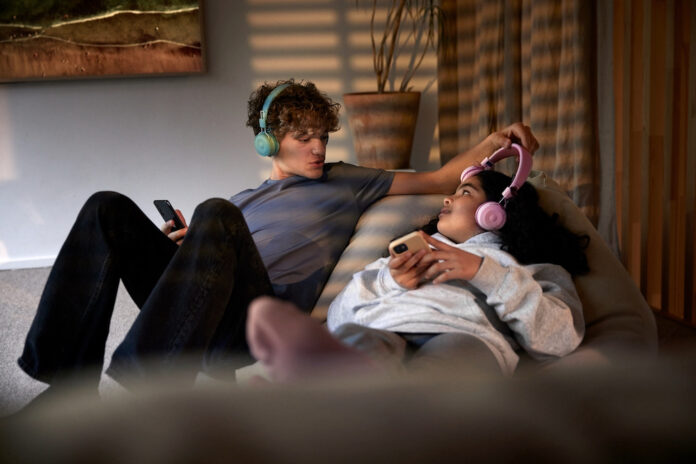The debate around telcos owning smart home spaces is over so the question is, will AI reopen parts they can monetise?
Almost every second household (46%) is currently smart according to a study carried out by Germany’s digital association Bitkom. This is up from 43% in 2022 and 37% in 2020. Meanwhile, even seniors are increasingly open to smart home technologies: 30% of people between 65 and 74 already use at least one such application. Among those over 75, however, the figure is only 6%.
Telcos pretty much missed the smart home management market but the emergence of edge AI applications much give them a second shot to grab at least some of the functionality as a potential managed service, even if they are providing it on a wholesale basis to specialised service providers.
80% of all Germans are open to AI-controlled smart home tools in the future. Most (70%) can imagine using AI in their heating, for example by not only learning the comfortable temperature at different times of the day, but also taking energy saving into account. 51% would use an AI that can proactively detect damage to building technology and arrange for maintenance. Many people can also imagine AI control of lighting (66%), alarm systems (51%) or vacuum and mop robots (36%).
“Smart home applications can make life more comfortable, safer and more energy efficient. AI will make intuitive interaction with the smart home even easier and create the basis for completely new services and applications. It is to be expected that the smart home market will experience a real growth spurt thanks to AI,” said Bitkom CEO Dr Bernhard Rohleder.
Robot vacuum cleaners
Smart lamps and lights are already in use in 41% of households (2022: 36%). This is followed by smart radiator thermostats with 36%, which were still used by 25% of Germans two years ago. Smart sockets are in third place with 31% (2022: 21%).
In one in four households (26%) a robot vacuum cleaner does its rounds (2022: 22%). 18% still let a robot lawnmower do its work in the garden. Window cleaning robots (1%), on the other hand, are used extremely rarely. The survey found that, 28% have given their robot a name. It is often derived from the function of the robot: Rasimir, Mählanie, Dolly or Rasenpirat, Staubinator, Hauself, Heinzelmann or Saugus Rex were mentioned as examples.
Smart video
Smart video surveillance (21%) and smart alarm systems (18%) are each used by around a fifth – there have been slight declines here compared to 2022 (smart video surveillance: 25%; smart alarm systems: 24%).
On average, users of smart home technologies have seven corresponding devices or applications in their home. Two thirds (69%) of users say: “I never want to live in a home without smart home applications again.”
Living smarts
Most people use smart home devices in the living room (54%) and in the bedroom (47%) or in the garden area (42%). The dining room (28%) and kitchen (25%) were less so. One tenth of smart home users also have smart home technologies in their childrens’ rooms (10%). Regardless of which and how many rooms they have, one third (34%) have equipped their entire house or apartment with smart home devices.
Voice control is becoming increasingly important in the smart home. 65% already operate their devices and applications using voice commands, compared to 55% two years ago. A stationary voice assistant such as Alexa, Google Home, etc. is usually used for this, although mobile voice assistants via smartphone or smartwatch also play a major role. Almost all users of smart home tools (90%) also control their devices via an app on their smartphone, 44% via a tablet app and 28% via a smart display. 14% use a remote control.
Users with security concerns
While people see great advantages in improving their physical security, they sometimes worry about whether smart home applications can also pose a risk to IT security. 55% are worried that they are being monitored via smart home applications. 5% say they use smart home applications to monitor family members or the neighbourhood.
96% of smart home users want an independent seal or certificate to guarantee a high level of security against hacker attacks – and 87% want a corresponding label that guarantees a high level of data protection. 86% want the manufacturer to offer the longest possible update guarantee.
Even those who do not have any smart devices in their household are often put off by security concerns. More than half of non-users (54%) are afraid of hacker attacks. 43% are afraid of their personal data being misused and 36% are worried about their privacy. Many also find the devices too expensive (31%) or the operation seems too complicated (27%).
Despite the concerns mentioned, so far no one has observed hacker attacks on one of their smart home devices – the same applies to the preliminary survey in 2022. For those who rarely (25%), occasionally (13%) or regularly (8%) struggle with outages in their applications, this is usually due to a disruption in the internet connection (77%).
These are the results of a representative survey of 1,193 people in Germany aged 16 and over, which was carried out on behalf of the digital association Bitkom on the occasion of the Berlin IFA show, which begins in September.



